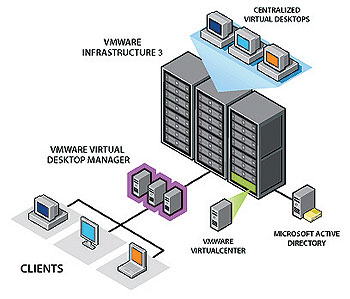The benefits of server virtualization can be so enticing that it’s easy to forget that the technique isn’t without its share of limitations.It’s important for a network administrator to research server virtualization and his or her own network’s architecture and needs before attempting to engineer a solution.


The benefits of server virtualization can be so enticing that it’s easy to forget that the technique isn’t without its share of limitations.
It’s important for a network administrator to research server virtualization and his or her own network’s architecture and needs before attempting to engineer a solution.
For servers dedicated to applications with high demands on processing power, virtualization may not be the best choice.
That’s because virtualization essentially divides the server’s processing power up among the virtual servers. When the server’s processing power can’t meet application demands, everything slows down.
Tasks that shouldn’t take very long to complete might last hours. Worse still, it’s possible that the system could crash if the server can’t meet processing demands.
Network administrators should take a close look at CPU usage before dividing a physical server into multiple virtual machines or even employ high-level or multiple processors to counter the demand.
It is unwise to overload a server’s CPU by creating too many virtual servers on one physical machine. The more virtual machines a physical server has, the less the processing power each has.
In addition, there’s a limited amount of disk space on physical servers. Much as we might want to have many servers, for instance, the servers must be of limited disk space and memory.
As of now, the highest RAM a server can have is about 20GB and the highest hard disk is about 2TB Too many virtual servers could impact the server’s ability to store data.
Another limitation is migration. Right now, it’s only possible to migrate a virtual server from one physical machine to another if both physical machines use the same manufacturer’s processor.
If a network uses one server that runs on an Intel processor and another that uses an AMD processor, it’s impossible to port a virtual server from one physical machine to the other.
Why would an administrator want to migrate a virtual server in the first place? If a physical server requires maintenance, porting the virtual servers over to other machines can reduce the amount of application downtime.
If migration isn’t an option, then all the applications running on the virtual servers hosted on the physical machine will be unavailable during maintenance.
Many companies are investing in server virtualization despite its limitations. As server virtualization technology advances, the need for huge data centres could decline. Server power consumption and heat output could also decrease, making server utilization not only financially attractive, but also a green initiative.
As networks use servers closer to their full potential, we could see larger, more efficient computer networks. It’s not an exaggeration to say that virtual servers could lead to a complete revolution in the computing industry.
eddie@afrowebs.com


